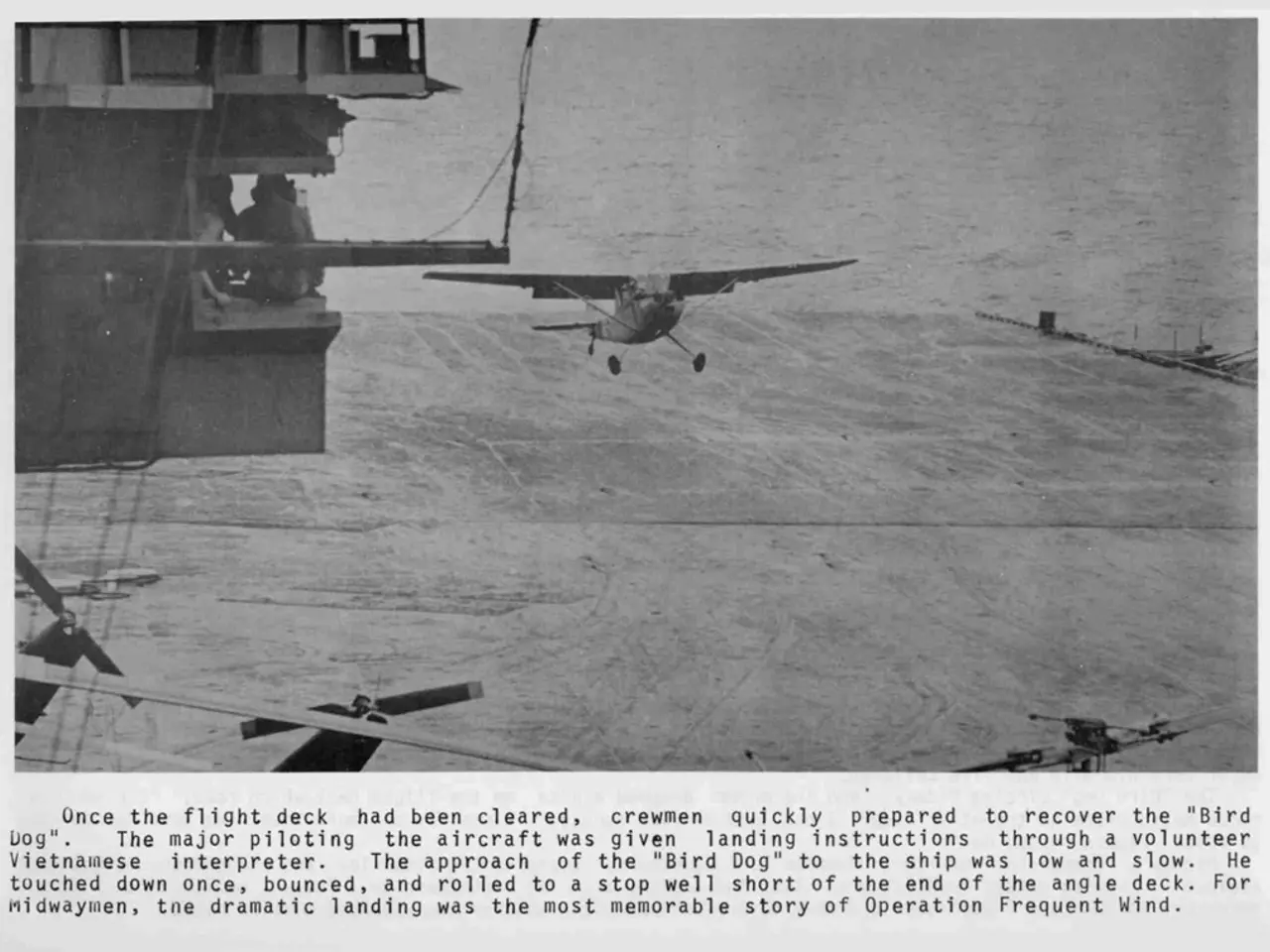Airborne Aid Shifted from Wunstorf to Gaza: Luftwaffe's Emergency Response
In the ongoing humanitarian crisis in the Gaza Strip, Germany has been conducting aid drops using two of its aircraft, each carrying 22 pallets, totaling around 75 tons of goods since last Friday [1]. These drops, originating from the Jordanian King Abdullah II Air Base, aim to provide urgently needed supplies quickly [1]. However, the current air delivery of aid is minimally effective and considered a last resort due to its limited capacity and inherent risks [1].
The drops are met with skepticism by aid organizations, who see them as expensive, risky, and barely controllable [1]. The UN World Food Programme representative, Martin Frick, states that air drops in overcrowded humanitarian zones are difficult to control and are 34 times more expensive than land transport [2].
Staff Captain Dieter, the pilot of one of the Bundeswehr aircraft, states that the drop zones are carefully selected to minimize risk [1]. Despite this, there have been dangerous incidents, such as the death of a nurse in Gaza caused by an aid pallet falling during a drop [1].
Key challenges faced in ensuring aid reaches intended recipients include limited volume and high cost, safety hazards, restricted land access, damage to medical and humanitarian infrastructure, security concerns and dual-use item restrictions, and violence against aid workers [1][2]. These issues contribute to the inefficiency of air drops compared to land-based aid deliveries through crossing points, which remain largely restricted and insufficient [1][3][5].
International actors such as Germany and France emphasize that air drops cannot replace the scale of aid needed, making the opening of land crossings the crucial factor for meaningful humanitarian relief [3][5]. Political and security considerations by Israel directly affect this access, complicating efforts to safely and adequately deliver aid.
Despite the challenges, the aim is to increase the amount of aid goods for the population in the Gaza Strip while reducing dependence on the United Nations and other international organizations [1]. The cargo consists of food items like rice, flour, sugar, noodles, and canned goods [1].
In addition, Israel has allowed around 200 trucks from UN and other organizations to enter the Gaza Strip daily for over a week [6]. The UN World Food Programme has over 170,000 tons of food in the region or on its way there, enough to feed the entire population of the Gaza Strip for almost three months [6].
References:
[1] Al Jazeera. (2023, October 15). Germany conducts aid drops in Gaza amid criticism. Retrieved from https://www.aljazeera.com/news/2023/10/15/germany-conducts-aid-drops-in-gaza-amid-criticism
[2] The New Humanitarian. (2023, October 14). Gaza aid drops: Expensive, risky, barely controllable. Retrieved from https://www.thenewhumanitarian.org/news/2023/10/14/Gaza-aid-drops-expensive-risky-barely-controllable
[3] Deutsche Welle. (2023, October 16). Germany's aid drops in Gaza: 'Not a solution' to the crisis. Retrieved from https://www.dw.com/en/germanys-aid-drops-in-gaza-not-a-solution-to-the-crisis/a-61975936
[4] The Washington Post. (2023, October 12). More than 150,600 Palestinians injured in Gaza conflict, health authority says. Retrieved from https://www.washingtonpost.com/world/2023/10/12/gaza-conflict-casualties/
[5] Middle East Eye. (2023, October 13). Gaza Humanitarian Foundation distributes aid alongside international groups. Retrieved from https://www.middleeasteye.net/news/gaza-humanitarian-foundation-distributing-aid-alongside-international-groups
[6] United Nations Office for the Coordination of Humanitarian Affairs. (2023, October 11). Humanitarian situation in Gaza remains critical. Retrieved from https://www.ochaopt.org/content/humanitarian-situation-gaza-remains-critical-2023-october-11
- Due to the high cost, risks, and difficulties in controlling air drops, aid organizations such as the UN World Food Programme prefer land-based aid deliveries through crossing points, despite them being restricted and insufficient.
- The aim of air drops in the Gaza Strip, as conducted by Germany and other international actors, is not to replace land-based aid deliveries but to increase the amount of aid goods for the population while reducing dependency on the United Nations and other organizations.




